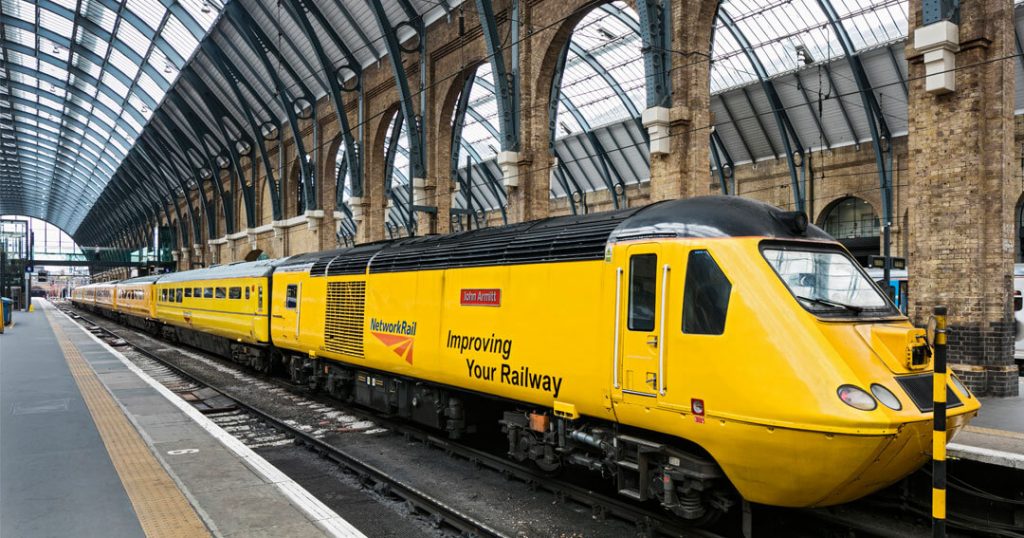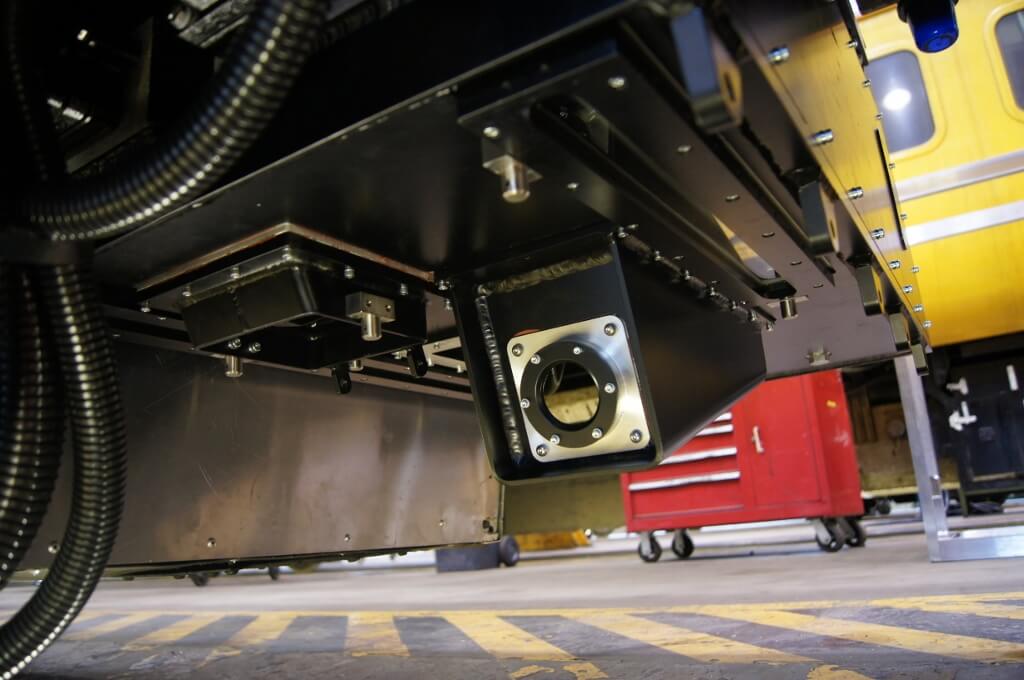Our New Measurement Train (NMT) monitors and records track condition information at speeds up to 125mph. It helps locate and identify faults before they become a safety issue or affect our performance.
Affectionately known as the Flying Banana due to its distinctive yellow livery, the NMT is a unique, high-tech machine that we’ve been using for almost 15 years. Equipped with the newest equipment, high-tech measurement systems, track scanners, and a high-resolution camera, this converted Intercity High Speed Train (HST) helps us measure the condition of our tracks.
Its ability to measure over great distances in a single operating shift is useful on our 20,000 miles of track. The NMT covers 115,000 miles in a year and will capture around 10TB of image data every 440 miles.
Travelling at 125mph it identifies faults faster and more accurately than ever before. This helps us to keep the railway safe because we can discover problems at an early stage. Engineers can then make repairs or plan maintenance to prevent serious incidents such as derailments.

The NMT and our other monitoring trains enable Network Rail to monitor its track without the need to block railway lines. The monitoring fleet slot between timetabled trains so there are no delays or disruption as a result of its work.
Equally, it saves us millions of pounds because we can avoid unnecessary maintenance. By knowing the condition of the track, we can predict and prevent faults before they occur. This allows us to target our efforts where they are most needed.
Our Route Services team operates the NMT. The on train technicians monitor the equipment and can close railway lines and order an immediate fix if needed. The train supplements the work of our track patrol specialists who carry out further inspections, following up on faults found by the NMT.
Measuring with the NMT gives the most accurate data as the train affects the track in the same way as a passenger train.
Did you know?
Route Services is a team within Network Rail that collects, analyses and communicates information about railway infrastructure assets. This data and information help Network Rail teams to make informed business decisions that further improve the safety, effectiveness and efficiency of the railway network.
Sensory equipment
The NMT is the most technically advanced train of its type in the world. This is thanks to its range of sensory technology, with both mechanical devices and optical instruments on board.
A laser sensor gives information about the profile of the rail head, measuring shape and movement optically. At the same time transducers and accelerometers mechanically measure the up and down movement of the train as it travels along the rails. This data provides information on track geometry – the shape and profile of the rail head, and the twist of the track.

Our plain line pattern recognition (PLPR) system uses a series of lasers and cameras to detect faulty track components as the train passes over them. Image analysis software uses an algorithm to compare what the cameras see with an image of how the track should look. It might identify missing Pandrol clips, which secure rails to the sleepers, for example. This is a common fault. Where an incident is recorded, the teams on the ground will replace them.
In total, the NMT is equipped with a track geometry system, laser track scanners, a high-resolution video camera, unattended geometry measurement system, and overhead line inspection systems. These are in addition to the PLPR system and a radio survey system which check coverage for the GSM-R communication system.
Train layout
At either end of the NMT, a diesel-electric engine within a Class 43 power car pulls the train. There is a conference area that seats 12 along with two carriages for the on train crew. The monitoring takes place within two of the carriages (The Development Coach and Production Coach).
Preventing faults
There are three main types of track defect that the NMT helps to prevent:
- Twist – when two tracks are no longer parallel. When one rail is raised or dropped slightly it can create a tilting movement that could derail a train.
- Cyclic top – where a dip in the rail surface causes a wheel to bounce. The rail surface gets worse with every train that passes over it. The bounce can lead to damage elsewhere on the rail, potentially leading to a sequence of dips and a derailment.
- Problems with gauge – The NMT monitors the gauge (width) of the track to prevent it becoming too wide or tight.
New Measurement Train by numbers
- 1 New Measurement Train, which can measure track condition at 125mph.
- The train surveys 4,800 miles of track every two weeks.
- It carries out shifts of up to 1,000 miles at a time
- The train covers 115,000 miles in a year.
- There are 14 sensors on board – from linear variable differential transformers and lasers to gyroscopes and accelerometers.
- Each Plain Line Pattern Recognition image file, recorded by seven cameras on the NMT, is 2048 pixels wide and 30 miles long.
- It captures around 10TB of image data every 440 miles.